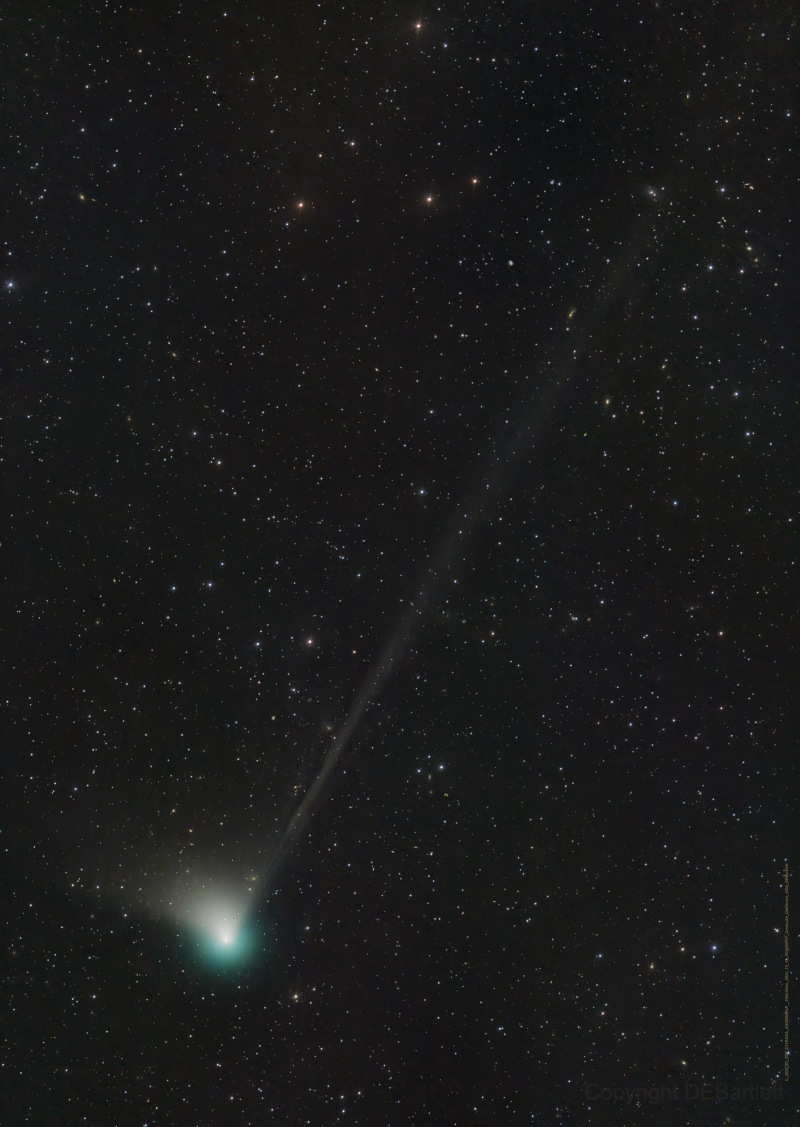One evening, several weeks ago, Ronald Pedelty, adjunct professor of physics, stood on the lawn near the Science Center on Hawk Hill, along with students in his astronomy class, their telescopes aimed at the sky.
They were hoping to catch a glimpse of the green comet, which was passing through space for the first time since the Stone Age, about 50,000 years ago.
Officially known as C/2022 E3 (ZTF), the green comet got its nickname from its vivid green color that comes from sunlight interacting with diatomic carbon in the comet. The closer the comet is to the sun, the more bright and visible its color. C/2022 E3 (ZTF) was first discovered in March 2022 by scientists at the Zwicky Transient Facility in California, where a camera attached to a telescope scans the sky for moving comets, asteroids and other discoveries in space.
Pedelty and the students were on the lawn Feb. 1, but the comet would be visible for the next two weeks. Pedelty had passed out maps for the students and directed them to look for the “diagonal stars in the Big Dipper’s bowl,” which would point them to the comet.
They didn’t see the comet. There was too much light pollution from the city.
However, they observed a waxing gibbous moon, which is the phase between a half moon and a full moon, several constellations, Jupiter, Mars, and something else that caught their attention: the International Space Station.
“The space station rose in the northeast sky and slowly crossed to the south, passing nearly directly overhead and outshing any other object in the sky besides the moon,” Pedelty said. “We were really lucky to get such a terrific view as it made its way across the sky over a period of several minutes.”
Joining Pedelty on the lawn were members of St. Joe’s Society of Physics Club, a student-run organization open to all students interested in physics. The club holds different events, such as a chance to view space through telescopes, and their mission is to promote the sciences, said Joseph Popp ’24, former president of the club.
Popp said one time the club was able to view the rings and moons of Saturn and Jupiter and its moons.
“It’s neat learning about it, but then seeing it that close is something else,” Popp said.
Physics majors Cameron McNeill ’23 and Shayna Sit ’25 also set up a telescope on the lawn near the Science Center earlier this month. They didn’t see the green comet, either. It was too cloudy.
“It was still enjoyable being able to be out there and to have hope that we would get to see it. Also that we were still able to observe space,” Sit said.
The Society of Physics Club is planning on having more events this semester, one being viewing the different phases of the moon.
Popp said he hopes to be a part of observing future comets or new discoveries in space with his research and involvement in the physics world.
“It’s fun to fantasize what the future could hold,” Popp said.














































